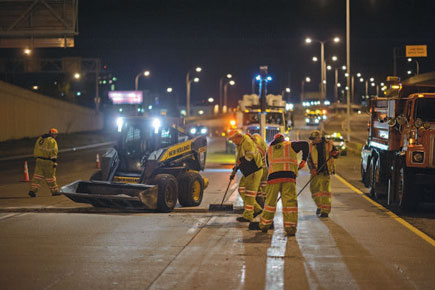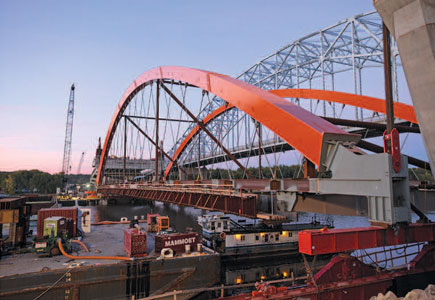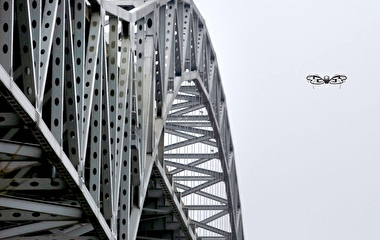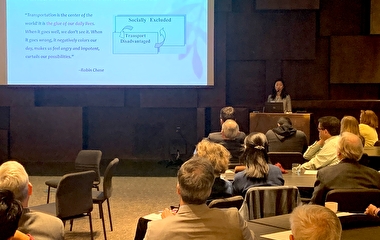prioritize needs for highway and bridge construction. Photo: MnDOT
Currently, there is no measurement method that can be uniformly applied to allow a direct comparison between bridge and road conditions. In a new study, U of M researchers have developed a proposed Percent Remaining Service Interval (PRSI) measure that can uniformly assess the condition of bridges and pavements, enabling planners to make the most efficient use of preservation and improvement funding.
“The concept of a uniform rating system is simple, but getting to the payoff is challenging,” says Glenn Engstrom, director of the Minnesota Department of Transportation (MnDOT) Office of Materials and Road Research. “There are good systems for both pavements and bridges, but they are hard to compare.”
These inconsistencies between MnDOT’s bridge and pavement groups impede strategic funding decisions that might otherwise optimize the long-term good of the entire highway and bridge system. “Both the MnDOT Bridge Office and the Materials and Road Research Office have very good management systems in place,” says Mihai Marasteanu, a professor in the Department of Civil, Environmental, and Geo- Engineering (CEGE) and the study’s principal investigator. “There is a good potential to develop a new common metric that both offices could use.”
To begin developing this new measure, researchers conducted a literature review of current methods used in asset management and life-cycle cost analysis. The review of bridge research focused on performance measures and life expectancy assessment methods, while the study of pavement literature concentrated on performance measures as well as on the use of road service life measures.
Next, the research team, which included CEGE bridge professor Arturo Schultz, surveyed both bridge management staff and pavement management staff from state transportation agencies. Team members then analyzed the asset management practices of MnDOT’s Office of Bridges and Structures and Office of Materials and Road Research to identify methods for assessing service lives and rehabilitation needs and to highlight the similarities and differences in approaches.
Based on the findings from the survey and analysis, researchers suggested the new method of PRSI that would serve both pavement and bridge needs and offered guidelines for the next steps in developing and implementing a unified PRSI procedure.
“Ultimately, funds for guardrail repairs are drawn from the same purse that pays to fill a pothole or repair a deck joint,” Marasteanu says. “With PRSI, planners could target average values across systems to optimize life-cycle costs and pursue an even distribution of PRSI values to make planning consistent from year to year.”
In the next phase of the project, researchers will work with the pavement office to identify relevant data for calculating PRSI for pavements. “In addition, we plan to identify the time and costs required to reach the evenly distributed configuration of PRSIs necessary for planning consistency, assess how preservation activities impact funding efficiency, and calculate recommended metrics for asset sustainability,” Marasteanu says.




